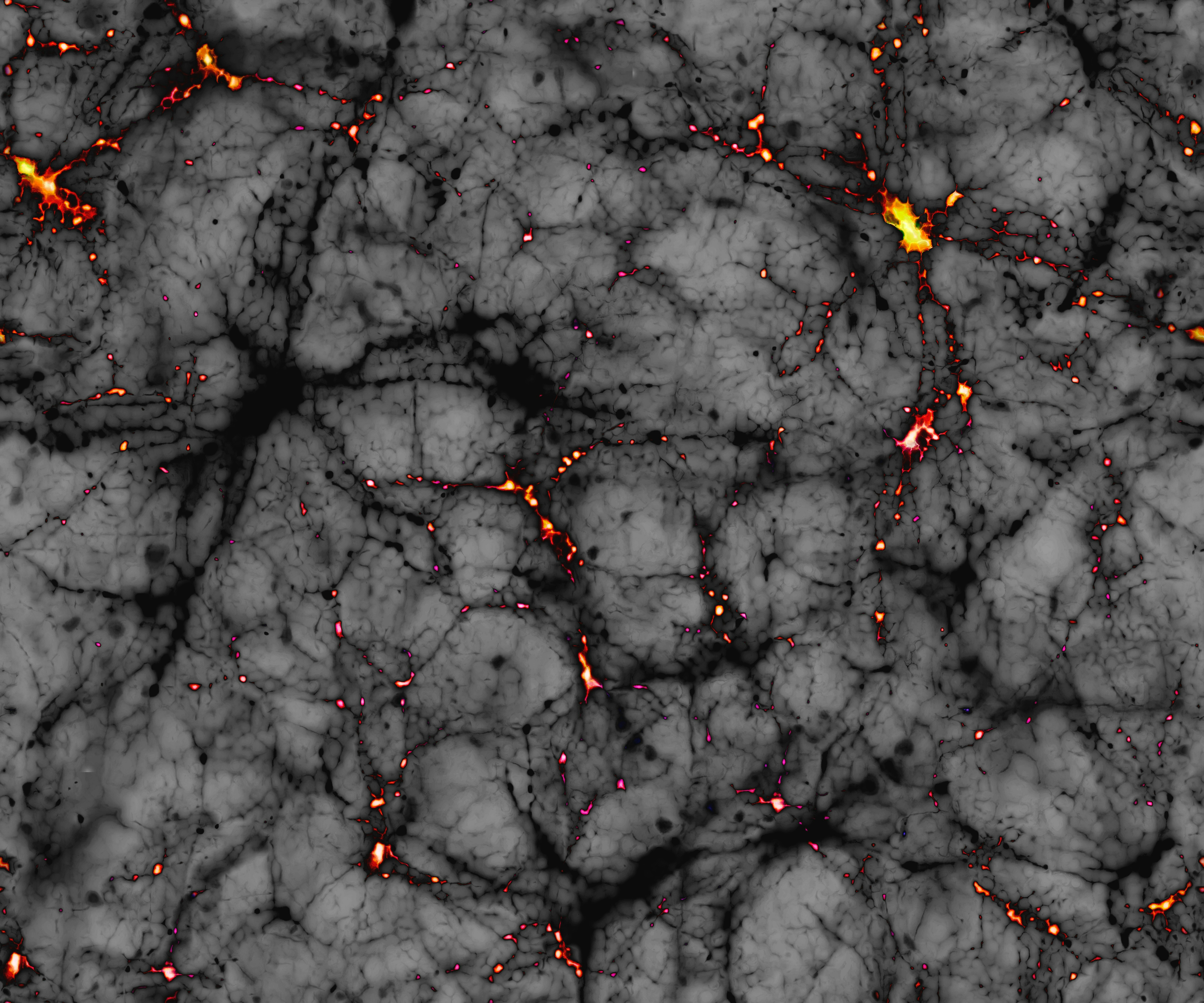
After almost a year of searching, a high-tech instrument buried deep in a South Dakota cavern has turned up no sign of dark matter. Ironically, a team of physicists is pretty excited about it.
After 280 days of watching for signs of a hypothetical form of dark matter called “weakly interacting massive particles,” or WIMPs, a team of physicists at Lawrence Berkeley National Laboratory say they’ve seen nothing. Rather than being discouraged, though, the team says that means they’re just narrowing down the search for dark matter, “leaving significantly fewer places for WIMPs to hide,” according to a recent press release from Lawrence Berkeley National Lab. But that’s assuming the physicists are right about what dark matter is made of, which is still an open question.
University of Michigan physicist Scott Haselschwardt, University College of London physicist Amy Cottle, and their colleagues recently presented their work at the TeV Particle Astrophysics 2024 conference in Chicago and the Light Detection in Noble Elements 2024 conference in Brazil.

Diary of a WIMPy Particle
The physics experiment called LUX-ZEPLIN was built to detect WIMPs by watching for the energy and electrons released when a stray WIMP collides with a xenon atom. Haselschwardt, Cottle, and their colleagues buried 10 tons of liquid xenon in a cavern deep beneath the rugged landscape of South Dakota in a structure carefully built to emit almost no natural radiation of its own. If dark matter is really made of WIMPs, and if physicists are right about how WIMPs work, at least a few of the enigmatic particles should be able to pass through the overlying rock and eventually bump into a xenon atom, setting off a faint flash of light and a tiny shower of electrons.
Extremely sensitive instruments are poised to capture the moment, and complex algorithms stand ready to rule out false alarms. But so far, nothing has happened.
WIMPs are just one possible explanation for dark matter: invisible, ineffable something that seems to make up most of the actual mass of our universe. In the way galaxies spin, and in the shape of the massive filaments of matter that make up the large-structure of the universe, the matter we can see is moving under the gravitational pull of a whole bunch of matter that we can’t see. Gravity seems to be the only way this unseen matter interacts with the visible universe; it doesn’t absorb or reflect light, and it doesn’t shine on its own (hence “dark matter”).
Physicists have two basic ideas about how dark matter might work. One, called “hot dark matter,” involves particles that zip through the space at nearly the speed of light. These are probably neutrinos. The other, called “cold dark matter,” involves slower-moving particles. And cold dark matter could be all sorts of things, from WIMPs or another hypothetical particle called axions to clusters of black holes, some with no more mass than a paper clip.
At the moment, most of what we know about the universe points toward cold dark matter. If dark matter is cold, then small objects should grow, merge together, and form larger objects and structures; dwarf galaxies, for example, should collide and form larger galaxies, which in turn form galaxy clusters, and so on. And that’s mostly what we see happening in the actual universe. A recent map of dark matter along a long, straight line through space supports that idea.
But nothing we know so far sheds any light on what sort of stuff might actually make up cold dark matter. The tiny primordial black hole theory is by far the weirdest and coolest, but the other options involve previously unknown types of matter.
WIMPs or axions, if they exist, would be new types of elementary particle: the basic building blocks of all matter. Atoms are made of protons, neutrons, and electrons. Protons and neutrons are made of elementary particles called quarks. Quarks and electrons aren’t made of anything; they’re elementary. Other elementary particles include muons and the celebrated Higgs-Boson (physicists know of about seventeen types of elementary particles, and they’re still trying to figure out whether some, like WIMPs, actually exist or just make sense on paper).
Axions would be smaller and lighter than WIMPs, and they interact with normal matter not only through gravity but through the electromagnetic force (the one responsible for magnetism). WIMPs, on the other hand, would be heftier than axions and could interact with normal matter through gravity and what’s called the weak force, one of the fundamental forces of physics (specifically, the one that can cause quarks to become different types of quarks, and therefore change protons into neutrons).

Nothing to See Here – Yet?
Haselschwardt, Cottle, and their colleagues say their instruments and analysis software should have been table to detect if any of their xenon atoms (so, so many xenon atoms) had been struck by particles as small as about 9 times the mass of a proton. But so far… nothing.
“If WIMPs had been in the region we searched, we’d have been able to robustly say something about them,” says University of London physicist Chamkaur Ghag, a spokesperson for LUX-ZEPLIN, in a recent statement. “We know we have the sensitivity and tools to see whether they’re there.”
That means one of two things: either dark matter is made of something other than WIMPs (maybe neutrinos, or a different type of particle called an axion, or even swarms of teeny tiny black holes), or WIMPs exist but are smaller than nine times the mass of a proton. Haselschwardt, Cottle, and their colleagues are betting the next three to four years of work on the second option.
Just like we’re still trying to figure out whether dark matter is hot or cold, and just like there are a few different possible ingredients for cold dark matter, there are also a few different possibilities for exactly what WIMPs are like: different masses, different ways of interacting with the rest of the universe, and so on. Haselschwardt, Cottle, and their colleagues say that they can rule out some of those possibilities (the ones smaller than 9 protons in mass) and focus on searching for others.
To do that, they plan to gather 720 more days of data with LUX-ZEPLIN between now and 2028. They’re also developing new software and procedures for analyzing that data so they can hopefully detect even smaller WIMPs (if they’re there) bumping into xenon atoms. That data (and more time) will tell whether dark matter is made of WIMPs, tiny black holes, or something else even stranger.







